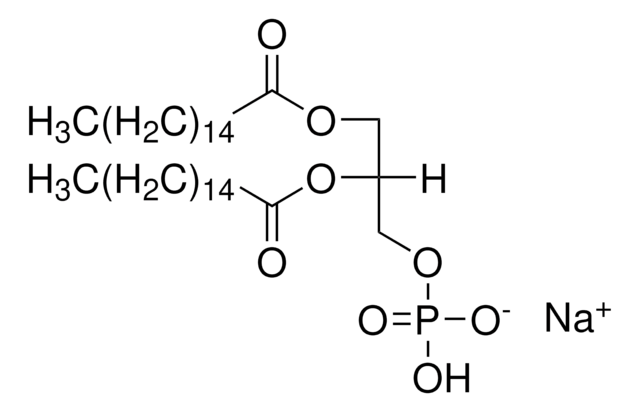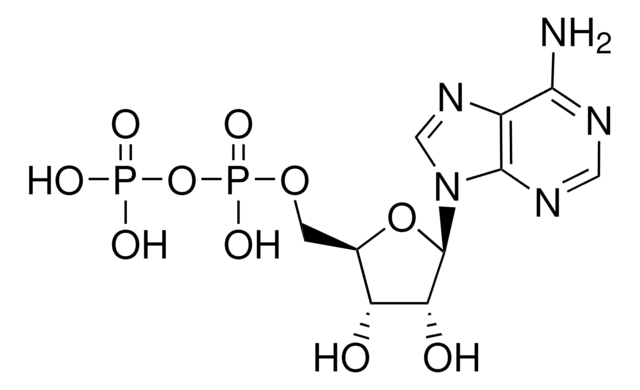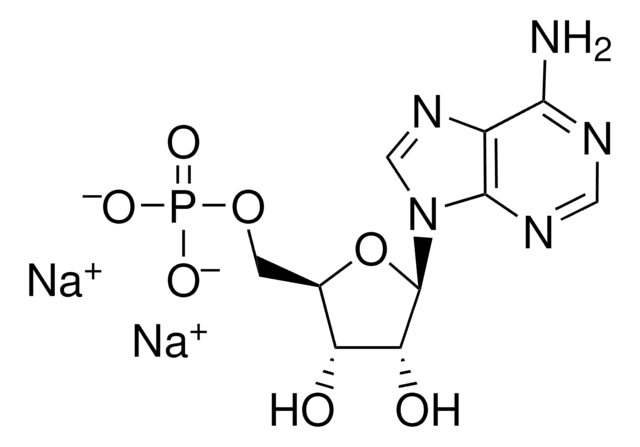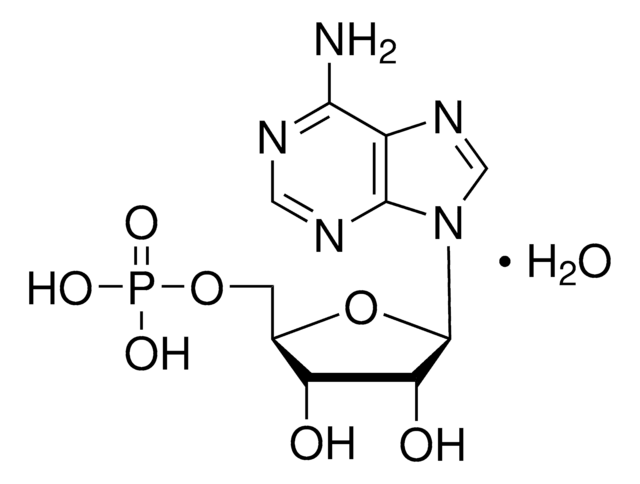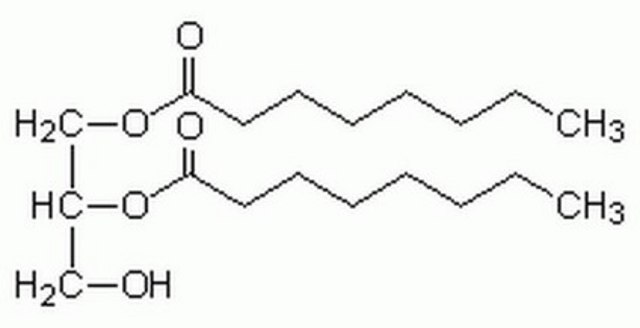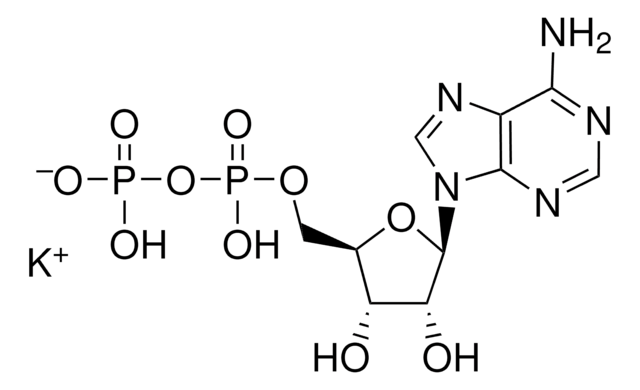P3591
1,2-Dioctanoyl-sn-glycerol 3-phosphate sodium salt
≥99%
Synonym(s):
L-α-Phosphatidic acid, dioctanoyl sodium salt
Sign Into View Organizational & Contract Pricing
All Photos(1)
About This Item
Linear Formula:
C19H36O8PNa
CAS Number:
Molecular Weight:
446.45
MDL number:
UNSPSC Code:
12352202
NACRES:
NA.77
Recommended Products
Assay
≥99%
form
powder
storage temp.
−20°C
InChI
1S/C19H37O8P.Na/c1-3-5-7-9-11-13-18(20)25-15-17(16-26-28(22,23)24)27-19(21)14-12-10-8-6-4-2;/h17H,3-16H2,1-2H3,(H2,22,23,24);/q;+1/p-1/t17-;/m1./s1
InChI key
ZNDNSOYDPUTHKQ-UNTBIKODSA-M
General description
1,2-Dioctanoyl-sn-glycerol 3-phosphate sodium salt is a cell-permeable phosphatidic acid (PA).
Application
1,2-Dioctanoyl-sn-glycerol 3-phosphate sodium salt has been used:
- to study its effects on neural stem/precursor cell (NSC) proliferation
- to study the effects of phosphatidic acid (PA) on actin filament dynamics in Arabidopsis thaliana epidermal leaf cells
- to treat vector-transfected cells and to verify the attenuation of hypoxia-inducible factor-1α (HIF-1α) induction in phospholipase D (PLD)-transfected cells by butanol
Storage Class Code
11 - Combustible Solids
WGK
WGK 3
Flash Point(F)
Not applicable
Flash Point(C)
Not applicable
Choose from one of the most recent versions:
Already Own This Product?
Find documentation for the products that you have recently purchased in the Document Library.
ETOH inhibits embryonic neural stem/precursor cell proliferation via PLD signaling
Fujita Y, et al.
Biochemical and Biophysical Research Communications, 370(1), 169-173 (2008)
Phospholipase D activates HIF-1-VEGF pathway via phosphatidic acid
Han S, et al.
Experimental & Molecular Medicine, 46(12), e126-e126 (2014)
Jindřiška Matoušková et al.
Plant science : an international journal of experimental plant biology, 223, 36-44 (2014-04-29)
Changes in actin cytoskeleton dynamics are one of the crucial players in many physiological as well as non-physiological processes in plant cells. Positioning of actin filament arrays is necessary for successful establishment of primary lines of defense toward pathogen attack
Yuko Fujita et al.
Biochemical and biophysical research communications, 370(1), 169-173 (2008-03-25)
While a mother's excessive alcohol consumption during pregnancy is known to have adverse effects on fetal neural development, little is known about the underlying mechanism of these effects. In order to investigate these mechanisms, we investigated the toxic effect of
Songyi Han et al.
Experimental & molecular medicine, 46, e126-e126 (2014-12-20)
Growth factor-stimulated phospholipase D (PLD) catalyzes the hydrolysis of phosphatidylcholine (PC), generating phosphatidic acid (PA) which may act as a second messenger during cell proliferation and survival. Therefore, PLD is believed to play an important role in tumorigenesis. In this
Our team of scientists has experience in all areas of research including Life Science, Material Science, Chemical Synthesis, Chromatography, Analytical and many others.
Contact Technical Service